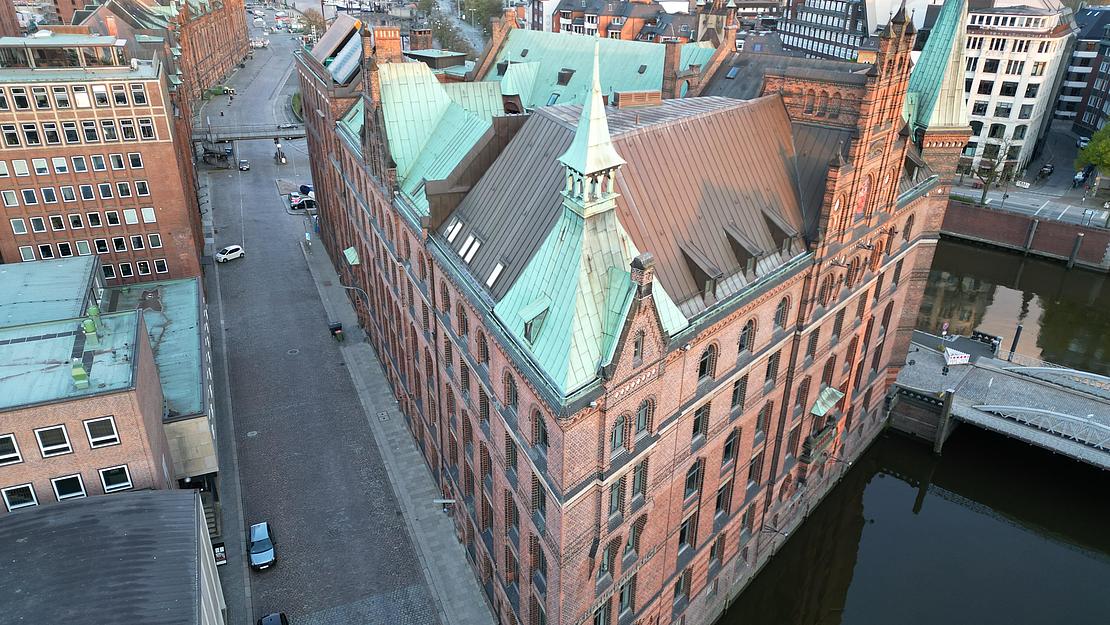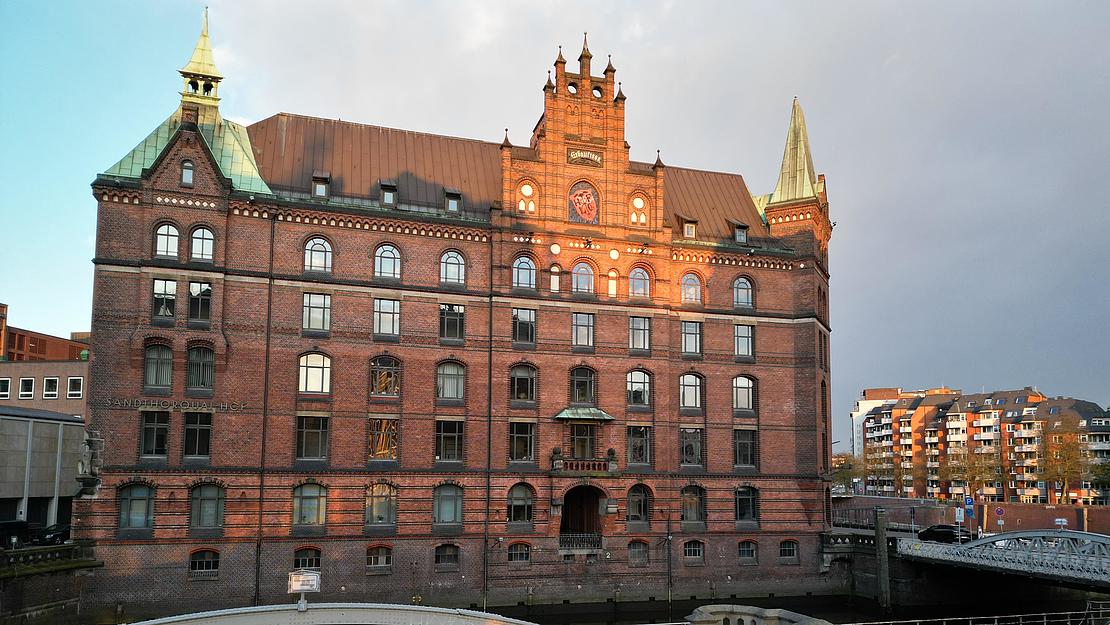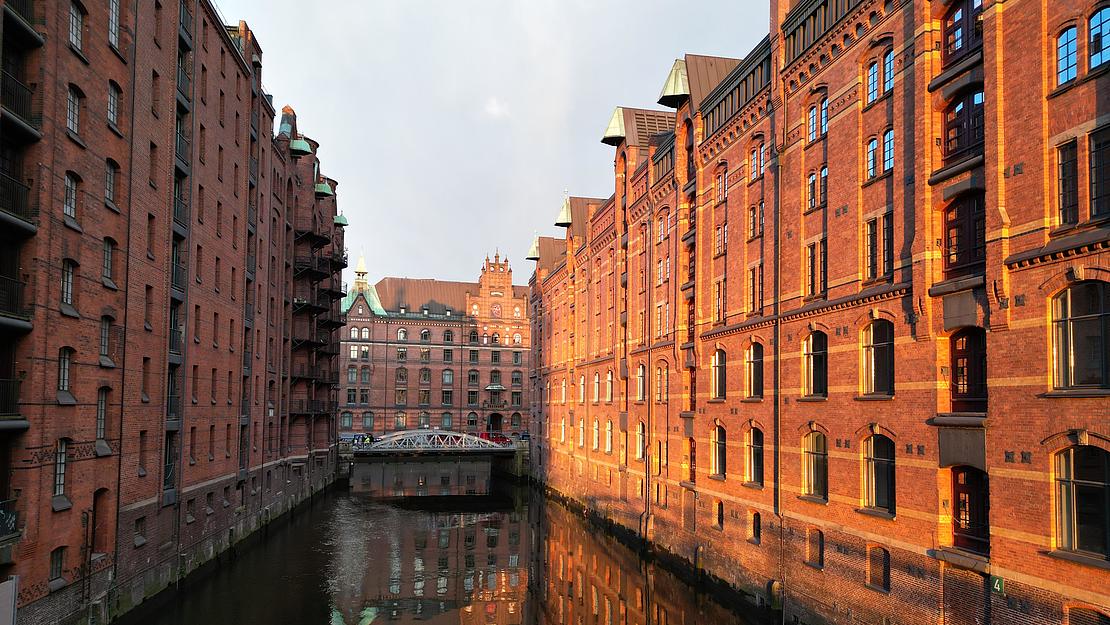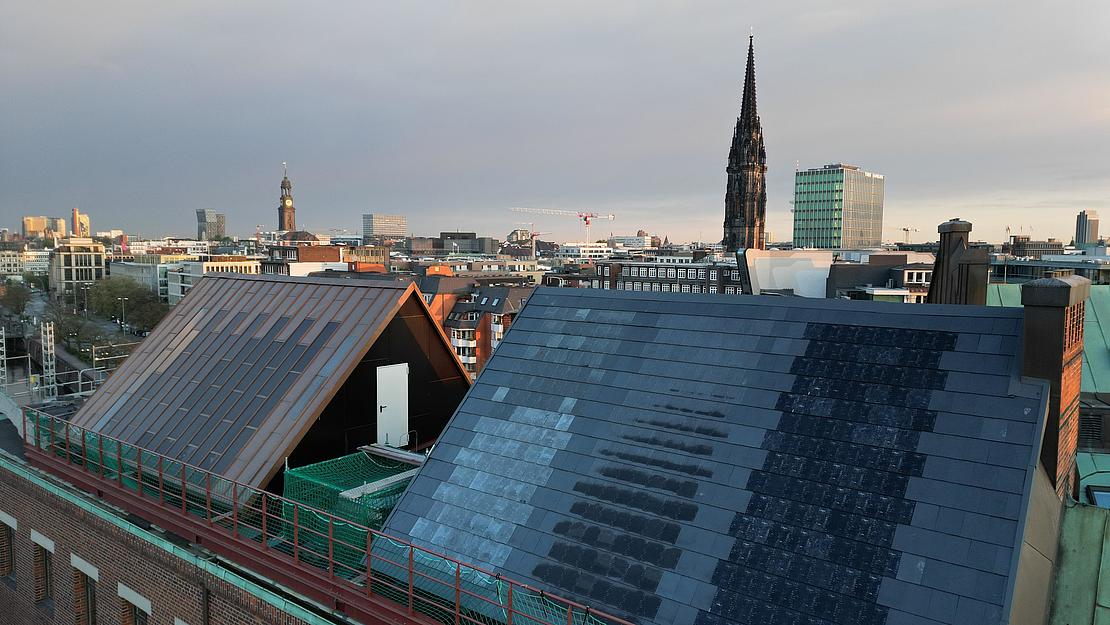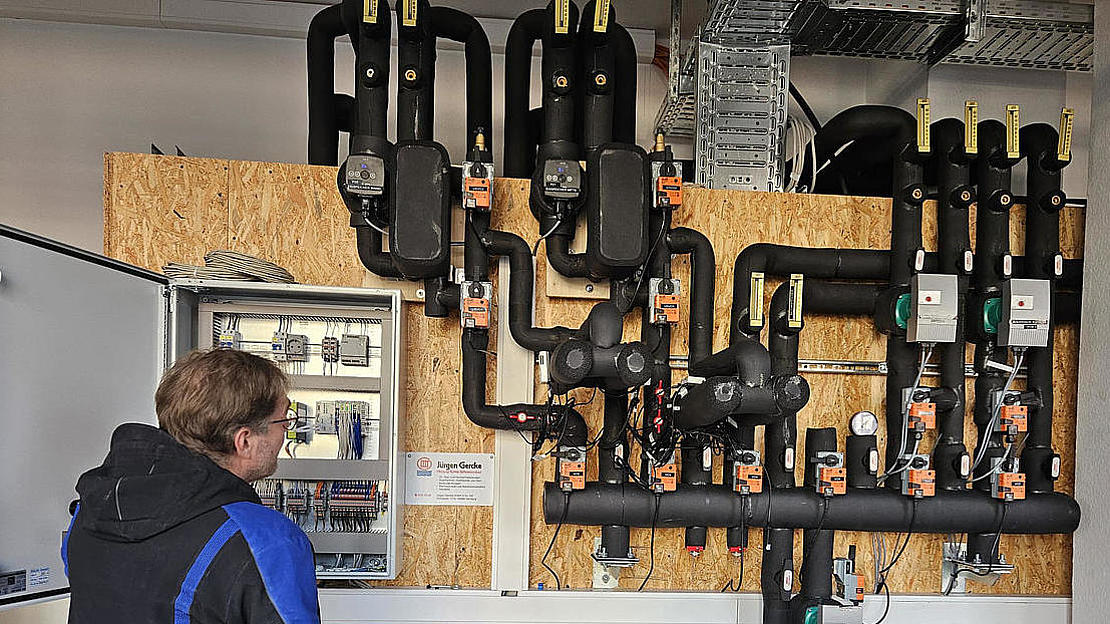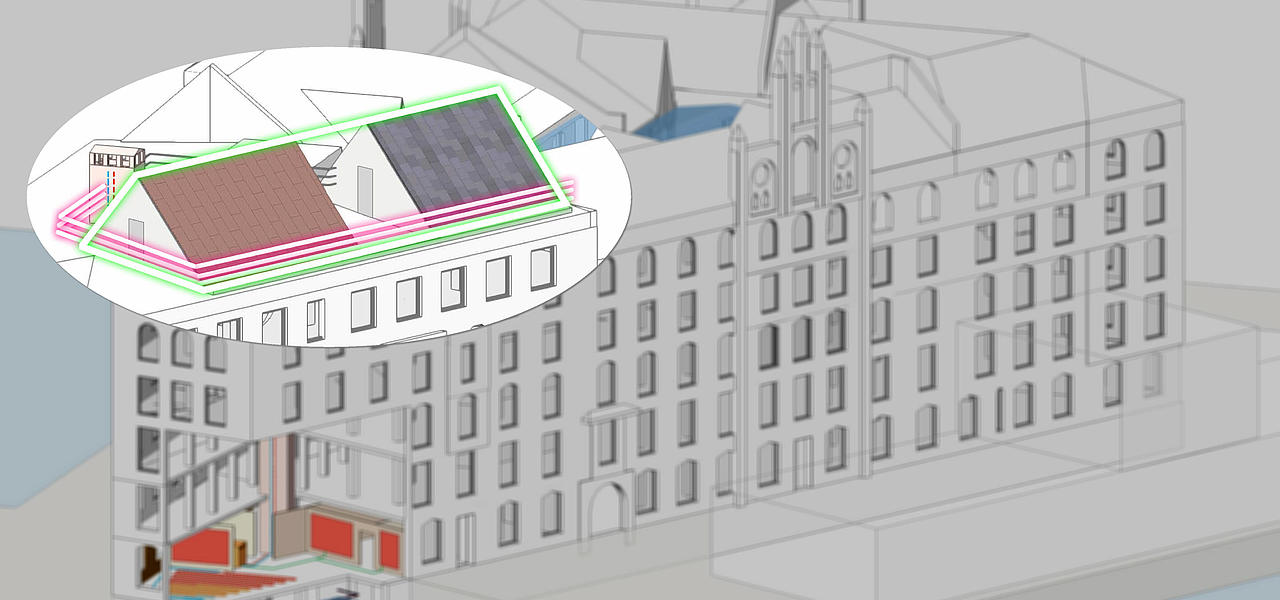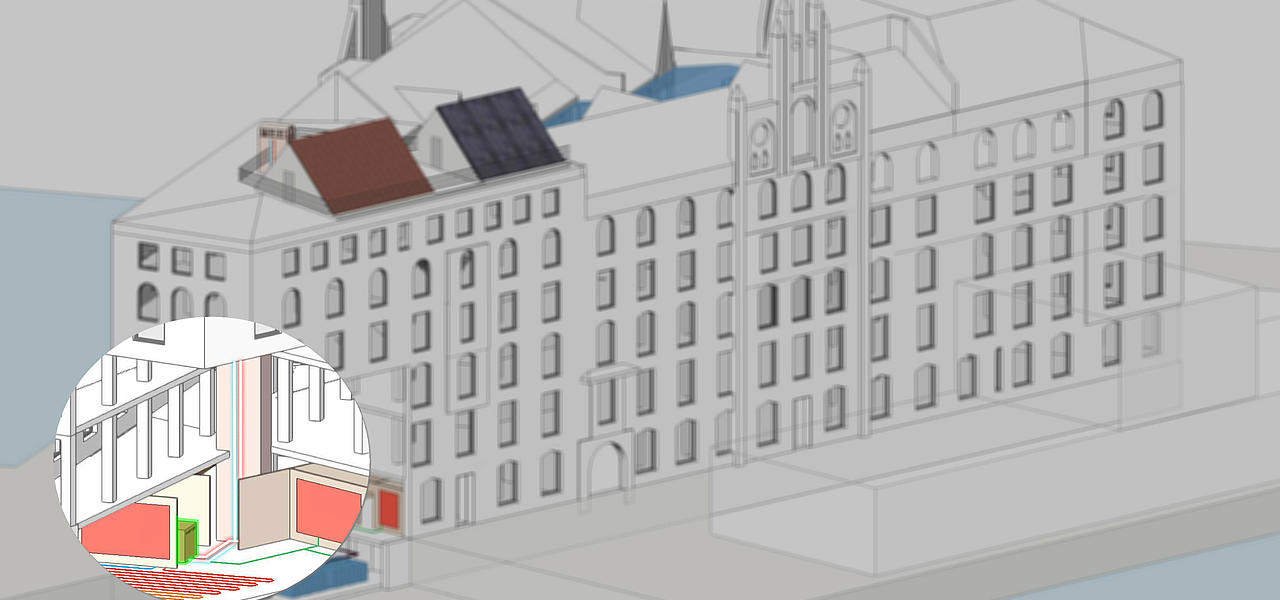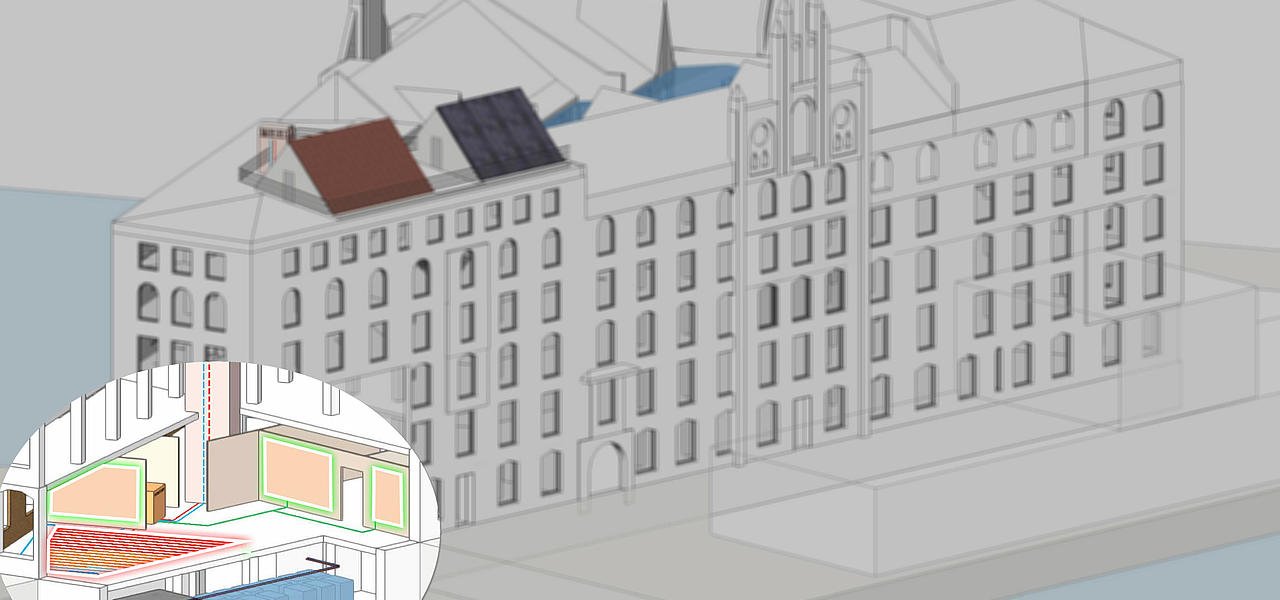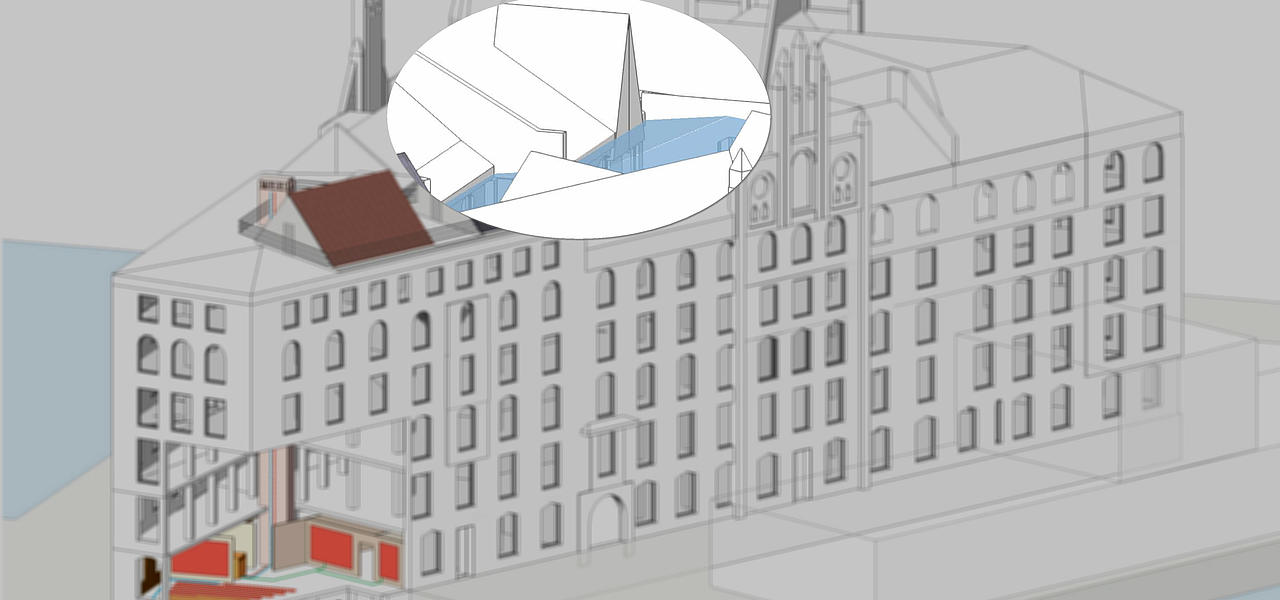Block H: A World Heritage Site as Energy Storage
Where coffee, tea and spices used to be stored, heat will soon be stored too. HHLA Real Estate wants to convert the Speicherstadt into an energy-efficient neighbourhood by 2040. The prototype is Storage Block H. A holistic energy concept is intended to turn Block H into a versatile energy generator and storage.
Sustainable solutions for existing buildings
As the construction of a building costs enormous amounts of energy and releases a lot of CO2, existing buildings should be preserved and operated for as long as possible. Therefore, monument protection is always climate protection. As the operator of the Speicherstadt, we at HHLA Real Estate see it as our duty to preserve buildings and conserve resources. However, we not only want to preserve history, but also shape the future with the help of innovative and sustainable solutions. Together with the Ministry for the Environment and Energy of the Free and Hanseatic City of Hamburg, we are investigating how renewable energies can be generated and integrated locally while maintaining the aspects of monument compatibility, economic efficiency and usability.
This resulted in the research project ‘CO2-neutral World Heritage Speicherstadt Hamburg’, funded by the Federal Ministry of Economics and Climate Protection (BMWK) and supervised by Project Management Jülich (PtJ). The project aims to answer the question of whether and how we can generate, store and distribute energy. The predicted yields are considerable: around 14 gigawatt hours of thermal energy and around 5 gigawatt hours of electrical energy could be generated via the roof surfaces of the Speicherstadt. This could supply 700 households with heat and 1400 households with electricity for an entire year.
Modern Technology meets Monument Protection
In contrast to a new building, the 140-year-old building stock of the Speicherstadt limits the possibilities for energy upgrades. For example, solar panels must not detract from the appearance of the monument or the Speicherstadt. Nor can we apply thick insulation to the unique brick façades or install heavily insulated windows. Together with the researchers, we are therefore using Speicherblock H as a prototype to investigate how energy efficiency and modern technology can be combined with monument protection and UNESCO World Heritage status.
Creating a Digital Twin with Building Information Modeling
In order for Speicher H to serve as a basis for future simulations and decisions, a large amount of data must be collected and analysed. The BIMLab at HafenCity University Hamburg is therefore creating a digital twin of the storage block, a so-called ‘building information model’ (BIM). By doing so, all of the building's data can be stored and maintained in this model and made accessible to experts from a wide range of fields, such as architects, engineers, energy experts and historians.
The model is also used to record the performance of the energy system. If this monitoring allows successful conclusions to be drawn, this form of local energy generation can be rolled out to the entire Speicherstadt - and, in principle, to any other existing building. Block H is therefore not only a prototype for the Speicherstadt, but can also demonstrate solutions for the energy-efficient refurbishment of buildings where the building fabric is to be preserved.

"If these prototype developments work, they can be transferred immediately to any normal existing building."
The path of energy from the roof to the office
The roofs of the Speicherstadt form a sea of turquoise and brown patinated copper panels and slate shingles. 40,000m² of roof surface can be used to ‘harvest’ and utilise solar energy and environmental heat. Click through the slider to learn how the research team has mastered the balancing act between monument protection and innovation and how the energy supply of the heat storage system is structured.
Further technical details can be found here
Monument protection is climate protection: sustainability in the Speicherstadt
Keeping grey energy in the building
As the owner of the Speicherstadt, we at HHLA Real Estate follow the principle: ‘The best new building is the one that doesn't have to be built’. The Speicherstadt buildings have been in operation for almost 140 years and are a prime example of how buildings can be preserved for centuries through continuous care and maintenance. The so-called ‘grey energy’ - the emissions used to build the Speicherstadt for the extraction, transport and production of raw materials - have been fully offset over the many decades of use.
These five arguments are decisive for the sustainable building substance of the Speicherstadt:
- Durable building materials: The Speicherstadt was built mainly from bricks, wood and steel. Thanks to the durability of these materials, resources are conserved.
- Preservation and utilisation of existing structures: Instead of constructing new buildings, the existing structure is preserved and used. This avoids CO2 emissions that would be associated with demolition and new construction.
- Reduced energy consumption: The continuous use and maintenance of the Speicherstadt requires less energy than the construction of new buildings, which further reduces CO2 emissions.
- Sustainable renovations: Renovations often use sustainable and energy-efficient techniques and materials that reduce the carbon footprint.
- Low land sealing: The Speicherstadt consists of compact, multi-storey warehouses that enable efficient use of space and thus reduce the need for additional land sealing, which in turn minimises CO2 emissions.
Hamburg's Speicherstadt acts as a storage facility for the CO2 bound in the buildings, as it optimises the use of existing resources and reduces the need for new, energy-intensive construction projects.
Combination with emission-free energy generation
Preserving the building fabric is therefore an elementary component of our sustainability strategy. With this research project, we want to prove that conservation and innovation are not mutually exclusive, but complement each other perfectly. If we succeed in fulfilling the ecological, economic, regulatory and monument protection conditions that this unique project requires, our goal will be within reach: a climate-neutral Speicherstadt - the climate storage city.

It would be a milestone if, at the end of the research project, there was a ‘kit of measures’ for the energy-efficient modernisation of listed buildings in line with conservation requirements.
The project partners: a strong research team
HHLA Real Estate is responsible for the overall coordination of the project. The project sponsor is the Jülich Research Centre (FZJ), while the Institute for Materials in Civil Engineering (IWB) at the University of Stuttgart is responsible for research coordination. HafenCity University Hamburg (BIMLab) and RWTH Aachen University (EONERC) are also project partners. The Ministry for the Environment and Energy and the Monument Protection Office of the Free and Hanseatic City of Hamburg are supporting the project in an advisory capacity as associated partners. The project is funded by the Federal Ministry of Economics and Climate Protection (BMWK).
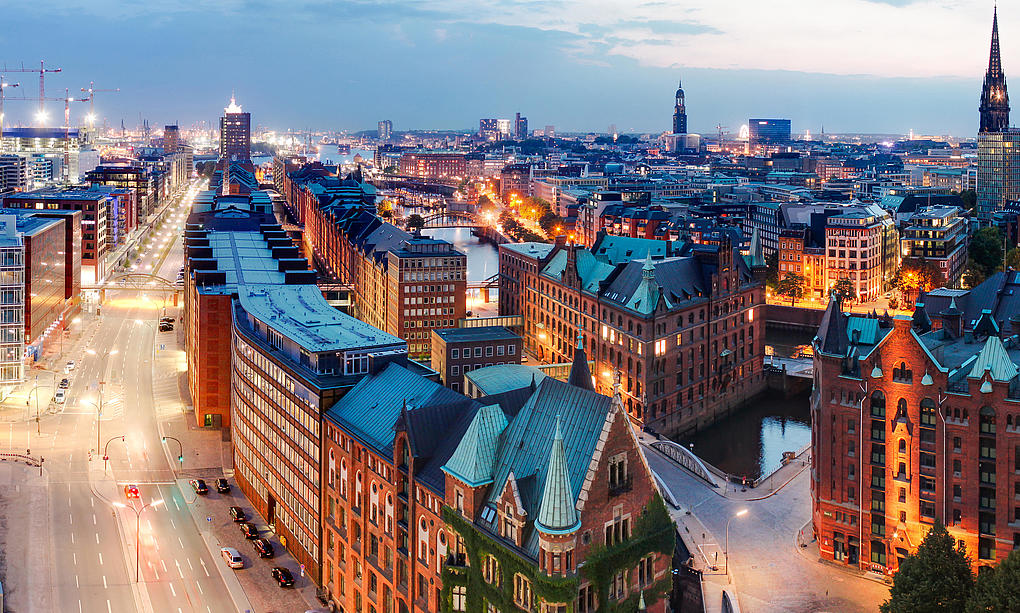
Read more about the project
In our magazine you can find out more about the research project and other current projects in the field of sustainability.

